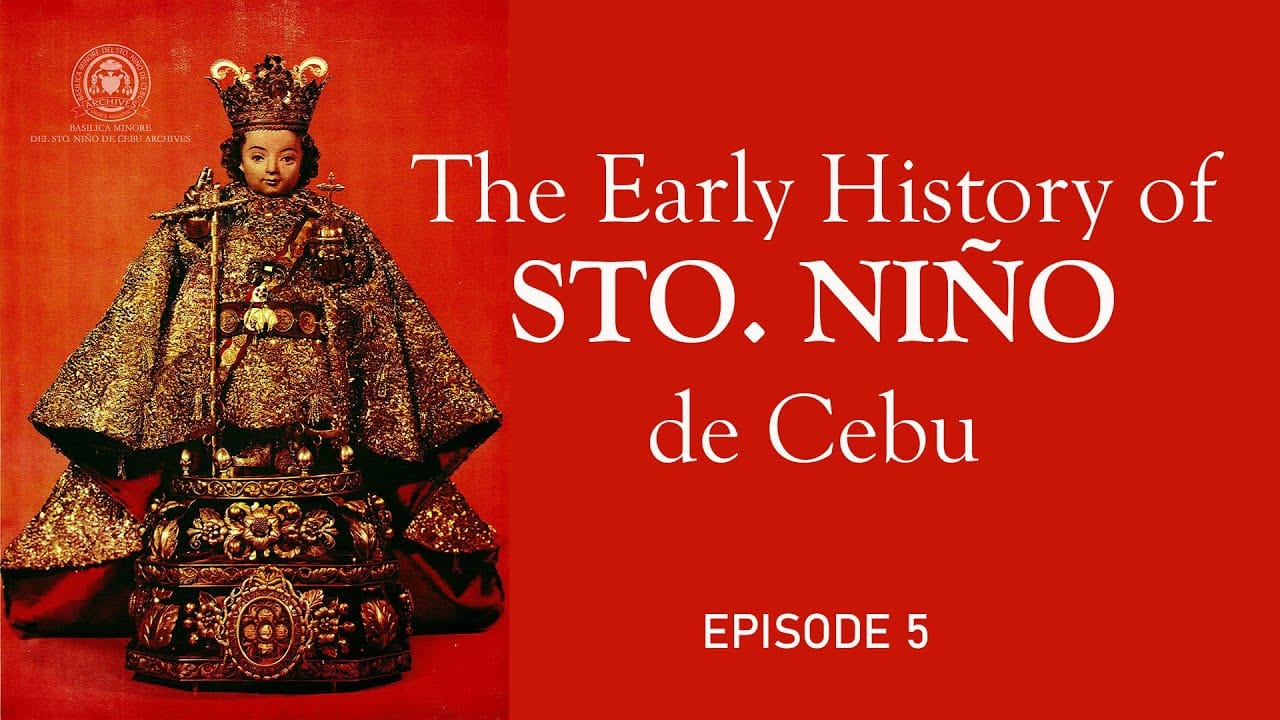Come along on a captivating adventure into the past as we unravel the enchanting story of the Santo Niño de Cebu. This beloved religious icon has left an unforgettable mark on the Philippines, capturing the hearts of Filipinos for generations. From its ancient origins to its profound religious significance, we’ll explore the fascinating tale that surrounds this cherished symbol. Dive into the legends, the historical moments, and the cultural traditions that have made the Santo Niño de Cebu an essential part of Filipino life. So, buckle up for an enlightening journey where every new discovery brings us closer to comprehending the enduring legacy of this beloved figure of faith and devotion.
History of Santo Niño de Cebu
Let’s talk about the Santo Niño de Cebu. It’s not just a statue; it’s a symbol deeply woven into the story of the Philippines, much like a thread running through the country’s journey of faith and culture.
In 1521, explorer Ferdinand Magellan arrived on the Philippine islands and presented a statue of the Santo Niño as a gift. It marked a pivotal moment, signifying the arrival of Christianity on Filipino soil. Rajah Humabon, the local ruler at the time, and his wife were baptized, suggesting an alliance and a new chapter for the islands.
But conflict soon erupted, leading to the disappearance of the statue. Decades later, in 1565, amidst Spanish colonization, the Santo Niño miraculously reappeared. This rediscovery was seen by many as a beacon of hope during a period of immense change and hardship.
Today, the Santo Niño is enshrined in the Basilica del Santo Niño, a destination for millions of pilgrims each year. This site stands as a testament to the enduring power of faith and the Santo Niño’s transformation into a cultural icon. Each year, the Sinulog festival brings the streets to life with vibrant celebrations honoring the Santo Niño.
The story of the Santo Niño de Cebu isn’t just about dates and events. This small statue, having witnessed arrivals, upheavals, struggles, and triumphs, has become a steadfast symbol of faith, resilience, and the enduring spirit of the Filipino people.
What is the significance of the Sto. Niño?
The Santo Niño de Cebu is a small wooden figure of baby Jesus that holds profound significance for Filipinos, far exceeding its physical form. This revered icon is housed in the Basilica del Santo Niño in Cebu City, a site that draws pilgrimages from far and wide.
Its importance stems from multiple factors. As the oldest Christian relic in the country, gifted by Ferdinand Magellan in 1521, it represents the enduring presence of Christianity in the Philippines. It has witnessed wars, fires, and countless upheavals, yet remains a powerful symbol of hope and resilience. Its survival against all odds reinforces the Filipino spirit, suggesting that faith can triumph over any challenge.
The Santo Niño is also believed to perform miracles. Stories abound of answered prayers and protection from harm, solidifying its status as a deeply personal symbol of faith for many Filipinos.
The annual Sinulog festival in Cebu City further amplifies the Santo Niño’s importance. This massive celebration, characterized by colorful parades, vibrant costumes, and joyful dancing, exemplifies the Filipinos’ deep faith and rich cultural traditions.
The significance of the Santo Niño extends beyond religion, weaving itself into the very fabric of Filipino culture. Its image, often appearing in homes and businesses, serves as a constant reminder of hope, faith, and the enduring spirit of the Filipino people.
Why are Filipinos devoted to Sto. Niño?
The Santo Niño’s arrival in the 16th century coincided with the introduction of Catholicism to the Philippines. As Filipinos gradually embraced this new faith, the Santo Niño, with its image of a gentle, innocent child, may have provided a sense of familiarity and comfort amidst significant cultural change.
The miraculous survival of the Santo Niño statue during fires and calamities amplified its significance. People associated it with protection and divine intervention, viewing it as a symbol of hope in challenging times. This resilience resonated deeply with the Filipino spirit, known for its strength and perseverance.
The Santo Niño also embodies values central to Filipino culture: family, faith, and childlike wonder. The image of the Christ Child aligns with the importance Filipinos place on family ties and respect for elders. Similar to the reverence children receive within families, the Santo Niño is cherished as a symbol of purity, innocence, and God’s boundless love.
Some researchers suggest that the devotion to the Santo Niño might echo pre-colonial beliefs where child deities held significant importance. This theory proposes a fascinating interplay between indigenous traditions and Catholic faith, resulting in a unique form of worship deeply intertwined with Filipino identity.
The devotion to the Santo Niño is deeply ingrained in Filipino culture, extending beyond religious observance. From vibrant festivals like Sinulog and Ati-Atihan, where devotees dance with infectious joy, to the intricate craftsmanship of Santo Niño statues adorning homes and businesses, the Santo Niño is a constant presence in daily life.
While historical events and cultural influences contribute to our understanding, the depth of devotion Filipinos hold for the Santo Niño continues to fascinate. It stands as a testament to the enduring power of faith, resilience, and the human need for hope, beautifully expressed through the image of a child.
What are the oldest Sto. Niño Images in the Philippines?
Throughout the Philippines, numerous churches proudly display cherished images of the Santo Niño. Several, however, stand out due to their age and the compelling stories surrounding them.
The most renowned is the Santo Niño de Cebú, housed in the Basilica Minore del Santo Niño de Cebú in Cebu City. Dating back to the 16th century, it is considered the oldest and most revered image of the Child Jesus in the entire country. History tells us that Ferdinand Magellan himself presented this statue as a gift to Rajah Humabon and his wife Hara Amihan upon their conversion to Christianity during his 1521 expedition. Adorned with fine garments and precious jewels, the Santo Niño de Cebú is believed by many to possess miraculous powers, drawing countless pilgrims seeking its blessings.
Other antique images, each whispering tales of faith and devotion passed down through generations, can be found across the archipelago.
The Santo Niño de Tondo and the Santo Niño de Pandacan, both located in Manila, exemplify this enduring legacy. While their exact origins remain shrouded in mystery, their presence in these historic districts speaks volumes about their profound significance to the communities they watch over. Similarly, the Santo Niño de Arevalo in Iloilo City commands deep respect and adoration. Though perhaps not as ancient as the image in Cebu, these statues hold no less significance as powerful symbols of faith and tradition within their respective communities.
The enduring appeal of these older images, particularly the Santo Niño, reflects the deep roots of faith in the Philippines. They are not merely statues; they are tangible links to the arrival of Christianity in the islands, representing hope, protection, and the enduring love of God. Each year, this devotion culminates in the Sinulog Festival in Cebu City, where millions gather from across the Philippines and around the world to celebrate the Child Jesus. This vibrant spectacle of parades, traditional dances, and religious processions expresses profound reverence and love for the Santo Niño.
While we can pinpoint the historical context of these images, ongoing research continues to unveil more details about their origins and the artistry involved in their creation. History is a living thing, constantly being investigated and reinterpreted, offering us deeper insights into the past and its impact on the present.
Is Santo Niño baby Jesus?
The Santo Niño, a deeply significant figure in Filipino Catholicism, is often perceived as the Child Jesus. However, the relationship is more nuanced than a simple equation. To understand this distinction, we need to delve into the historical and cultural context surrounding this sacred image.
Thinking about the Santo Niño and Baby Jesus
While the Santo Niño is often seen as baby Jesus, it’s more accurate to say that it represents baby Jesus in a way that resonates deeply with Filipinos. This representation is intertwined with their history, struggles, and enduring faith.
Consider the historical context: In the 16th century, during the Spanish colonization of the Philippines, explorer Ferdinand Magellan gifted a wooden statue of the Child Jesus to a local ruler. This statue, likely crafted in Europe, came to symbolize the complex relationship between the Spanish and the Filipinos.
Years later, amidst chaos and destruction, the statue was rediscovered. This event elevated the Santo Niño into a powerful symbol of hope and resilience, signifying that faith could endure even in the most challenging times.
More Than Just an Image
The Santo Niño is often depicted as a young traveler, carrying a basket of bread and a staff. This imagery connects him to the concept of pilgrimage, symbolizing his journey alongside the Filipino people, sharing their burdens and offering comfort.
Furthermore, the Santo Niño’s significance extends beyond its appearance. Its image is ubiquitous in Filipino life, from small charms worn for protection to monumental statues in churches. The annual Sinulog Festival in Cebu City, a massive celebration marked by vibrant dance and joyous festivities, stands as a powerful testament to the deep love and reverence Filipinos hold for the Santo Niño.
So, Is It Baby Jesus?
The question of whether the Santo Niño is “baby Jesus” doesn’t have a simple yes or no answer. It is a unique symbol that embodies Filipino faith, history, and identity. It represents hope, inspires resilience, and embodies unwavering belief.
While the Santo Niño might not directly correspond to a specific biblical account of baby Jesus, its power lies in the story it conveys about Jesus’ humanity and divinity. It serves as a poignant reminder that even in humble beginnings, immense potential for love, hope, and faith can flourish.
What is the legend of Sto. Niño?
The legend of the Santo Niño isn’t just an ancient tale; it’s deeply ingrained in Filipino culture and faith. Passed down through generations, this story is woven into the fabric of countless homes and churches across the Philippines.
In 1521, when explorer Ferdinand Magellan first set foot on the Philippine islands, he brought with him a remarkable gift: a small wooden statue of the baby Jesus, known as the Santo Niño. Adorned in elaborate robes and holding a tiny globe symbolizing his divine authority, this was no ordinary doll. Magellan presented it to Rajah Humabon, the ruler of Cebu, as a gesture of goodwill.
Fast forward a few decades. Tragedy had befallen Magellan, and the Santo Niño had seemingly vanished. Then, in 1565, Spanish conquistador Miguel López de Legazpi made an extraordinary discovery. While searching through the charred remains of a settlement, he found the Santo Niño, perfectly intact, amidst the ashes. This rediscovery was seen as a sign, a beacon of hope emerging from destruction.
For the Spanish, finding the Santo Niño wasn’t just a fortunate coincidence; it was a powerful symbol that validated their mission in the Philippines as divinely ordained. For the Filipinos, the statue’s miraculous survival through fire and turmoil made it an embodiment of resilience in the face of adversity.
Today, the Santo Niño is enshrined in the Basilica Minore del Santo Niño in Cebu City. Each year, millions of devotees make pilgrimages to this grand church, seeking solace, blessings, and a chance to connect with their spirituality through this small statue that has witnessed centuries of history.
The legend of the Santo Niño transcends the tale of a lost and found statue. It speaks to unwavering faith, resilience against all odds, and a hope that has endured for centuries in the hearts of the Filipino people.
Who is Sto. Niño in the Bible?
The Santo Niño, while deeply revered in Catholicism, isn’t explicitly mentioned in the Bible. There are no specific biblical narratives about a statue of the Child Jesus. So, how did this devotion become so central, particularly in the Philippines?
The answer lies in how the image of the Santo Niño embodies broader biblical themes and resonates with people’s faith.
The Bible recounts stories of Jesus’s birth, childhood, and upbringing. The Santo Niño captures the essence of Jesus’s early years, a time when he was both vulnerable and divine. This unique blend of childlike innocence and God’s immense power deeply resonates with many.
Ferdinand Magellan’s arrival in the Philippines in 1521, bearing the image of the Christ Child as a gift, played a pivotal role in shaping this devotion. People began attributing miracles and blessings to the Santo Niño, demonstrating their belief in its power. This wasn’t merely about a physical object; it was about what the Santo Niño represented: hope, protection, and a tangible connection to the divine.
The vibrant Sinulog Festival, a celebration of the Santo Niño, stands as a testament to the depth of this devotion. It’s not simply a festival; it’s an outpouring of faith intertwined with cultural heritage.
While the Santo Niño’s origins are generally accepted, it’s important to acknowledge that historical research is an ongoing process. Specific details may have varying interpretations as scholars continue to uncover new insights.
Therefore, while “Santo Niño” isn’t a term found in the Bible, the image derives its power from its ability to convey the essence of Jesus’ humanity and divinity. It serves as a reminder that even in humble beginnings, there exists an immense capacity for love, hope, and faith to flourish.
What is the significance of the El Niño event?
El Niño, a climate pattern characterized by the warming of surface waters in the central and eastern tropical Pacific Ocean, might seem like a distant phenomenon, but its effects ripple across the globe, impacting weather patterns and influencing our lives in profound ways.
Imagine a stone tossed into a pond, creating ripples that spread outward. El Niño acts in a similar fashion, but instead of a pond, it affects the vast Pacific Ocean. These changes in ocean temperature disrupt atmospheric circulation patterns, leading to a cascade of effects on weather systems worldwide, particularly during the winter months.
El Niño typically brings milder winters to the northern United States while increasing rainfall in the southern US. However, its reach extends far beyond North America. This climate pattern can trigger droughts in some regions, floods in others, and even disrupt the usual paths of hurricanes, leading to unpredictable weather events around the world.
These shifts in weather patterns can significantly impact our lives. Farmers, reliant on predictable weather cycles for their crops, face challenges from excessive rain or prolonged droughts. Fishing industries also feel the effects as fish populations migrate in response to changing ocean temperatures.
Scientists closely monitor El Niño, striving to improve our ability to predict its occurrence and intensity. This knowledge is crucial for preparing for potential droughts, floods, and other weather-related hazards, ultimately helping to safeguard lives and livelihoods.
Understanding El Niño highlights the interconnectedness of our planet’s climate system. Changes in one region can reverberate across the globe, emphasizing the urgent need to address climate change on a global scale.
While we have gained significant knowledge about El Niño, many questions remain. Researchers are actively investigating how climate change might influence the frequency and intensity of El Niño events. Their findings could have far-reaching implications for our planet’s future.
Why do people wave at Sto. Niño?
The sight of people waving at a statue of the Sto. Niño might seem unusual to some, but this gesture reflects the deep connection Filipinos have with the Holy Child.
When bidding farewell to someone dear to us, we often express our affection and acknowledge their presence with a wave, a smile, or a parting gesture. Waving at the Sto. Niño carries a similar sentiment. It’s a way of acknowledging his presence, expressing gratitude for his blessings, and seeking his continued protection. This simple act conveys love, respect, and trust.
The act of waving takes on heightened significance during the Sinulog Festival. As the image of the Sto. Niño passes by, millions of people raise their hands in unison, creating a sea of greeting and a powerful display of unity and shared devotion. In this moment, individual faith merges with a larger sense of community, demonstrating the collective power of belief.
Waving at the Sto. Niño transcends a mere physical gesture; it symbolizes the profound spiritual bond Filipinos share with the Holy Child. It’s a way of expressing gratitude, seeking guidance, and reaffirming their faith. This unique blend of religious tradition and cultural expression speaks to the depth of devotion found in the Philippines.
What is the history of the Sto. Niño festival?
The Sto. Niño festival, a vibrant spectacle of color, dance, and boundless energy, is a fascinating fusion of history and culture, its origins reaching back centuries.
Long before the arrival of the Spanish, the Cebuano people of the Philippines had established their own traditional dances and celebrations. While our knowledge of these early practices is incomplete, we know they were full of life, likely linked to their belief systems and daily lives.
When Spanish explorers introduced the image of the Sto. Niño (the Child Jesus) in the 16th century, the cultural landscape of the Philippines was forever changed.
The Cebuanos were captivated by this image. Some historians suggest that they saw it as a bridge between their existing beliefs and this new religion, leading to a genuine sense of wonder and connection rather than forced conversion. This marked the beginning of a beautiful cultural fusion.
The Cebuanos incorporated the Sto. Niño into their traditional dances, ultimately giving rise to the Sinulog. The distinctive two-steps-forward, one-step-back movement of the Sinulog is believed to mimic the flow of water, a significant element in pre-colonial Cebuano culture. This movement might represent the Cebuanos’ embrace of their new faith while retaining a connection to their past.
Over time, this harmonious blend of faith and tradition flourished. The Sto. Niño festival grew in scale, evolving into the massive, joyous celebration we know today. Each year, millions of locals and tourists alike flock to the Philippines to witness the Traslacion (the grand procession carrying the image of the Sto. Niño) and partake in the exhilarating Sinulog dance.
The Sto. Niño festival is more than just a spectacle. It reminds us of the dynamic nature of cultures, their ability to evolve, adapt, and embrace new influences while honoring their roots. It stands as a testament to the resilience of Filipino traditions and their ability to find unity and meaning in both the old and the new.
What is Santo Niño de Atocha Known For?
Santo Niño de Atocha, a beloved figure in Hispanic cultures, is much more than just a charming image. He embodies powerful ideals that resonate deeply with people from all walks of life.
Think of him as a guardian angel, but far more approachable. People turn to Santo Niño de Atocha for protection, especially during times of travel or hardship. He represents that reassuring presence, that friend watching over you no matter what challenges you face.
He is also a beacon of hope. When life throws its inevitable curveballs, Santo Niño serves as a reminder that you are not alone and that with faith, any obstacle can be overcome. He embodies that inner voice urging you forward, whispering, “You’ve got this!”
But Santo Niño is not all about serious matters; he also embodies compassion and generosity. The basket he carries serves as a constant reminder to be kind, to lend a helping hand to those in need, and to share what we have with others. He encourages us to embrace our shared humanity and treat each other with kindness.
The devotion to Santo Niño de Atocha originated in Spain during a time of conflict with Muslim rulers. People yearned for something to believe in, a source of hope amidst uncertainty. Santo Niño emerged as a symbol of resilience and faith, his popularity spreading throughout Spain and eventually taking root in Hispanic cultures worldwide.
His image contributes to his approachability. He is not a distant deity but a relatable child, a pilgrim embarking on a journey, complete with his staff, gourd, and basket. This depiction suggests that he walks alongside us, sharing in our experiences every step of the way.
Countless stories attribute miraculous events and blessings to Santo Niño’s intercession. While science may not be able to definitively prove these miracles, the power of faith and the comfort people derive from their belief are undeniable.
Santo Niño de Atocha embodies the most admirable qualities of humanity: love, hope, compassion, and an unwavering belief that even in the darkest of times, a miracle, however small, is always possible. He reminds us of our potential for good and encourages us to approach the world with an open heart and a spirit of generosity.
If you are interested in exploring diverse cultural and historical topics, you might find these articles intriguing:
- Georgia Platform: A Southern Strategy, 1850s - March 31, 2025
- How many weeks is 40 days: Quick Conversion Guide for Accurate Results - March 31, 2025
- How many feet is 300 meters? 984 Feet: Understand Length Conversions Easily - March 31, 2025
















